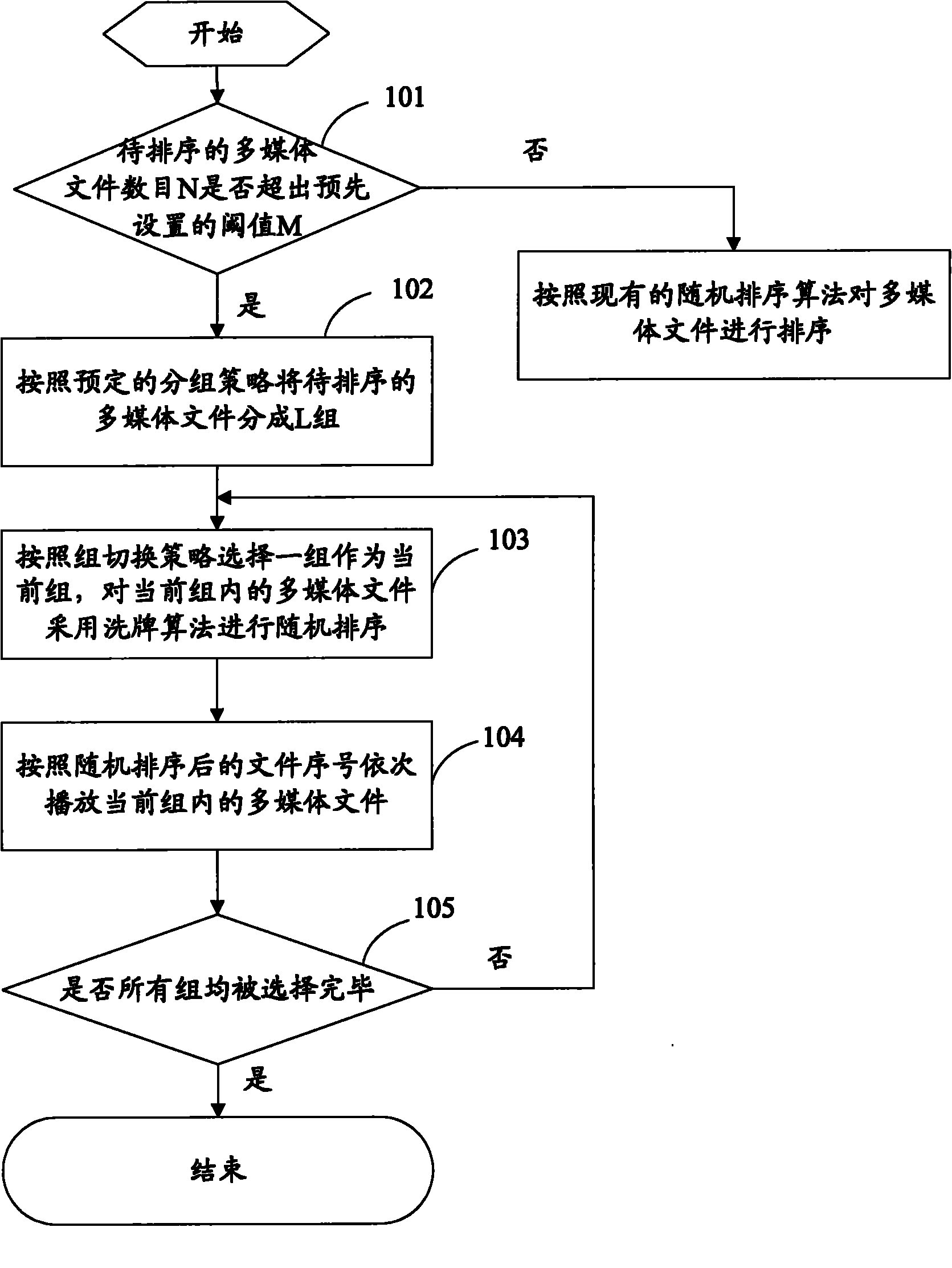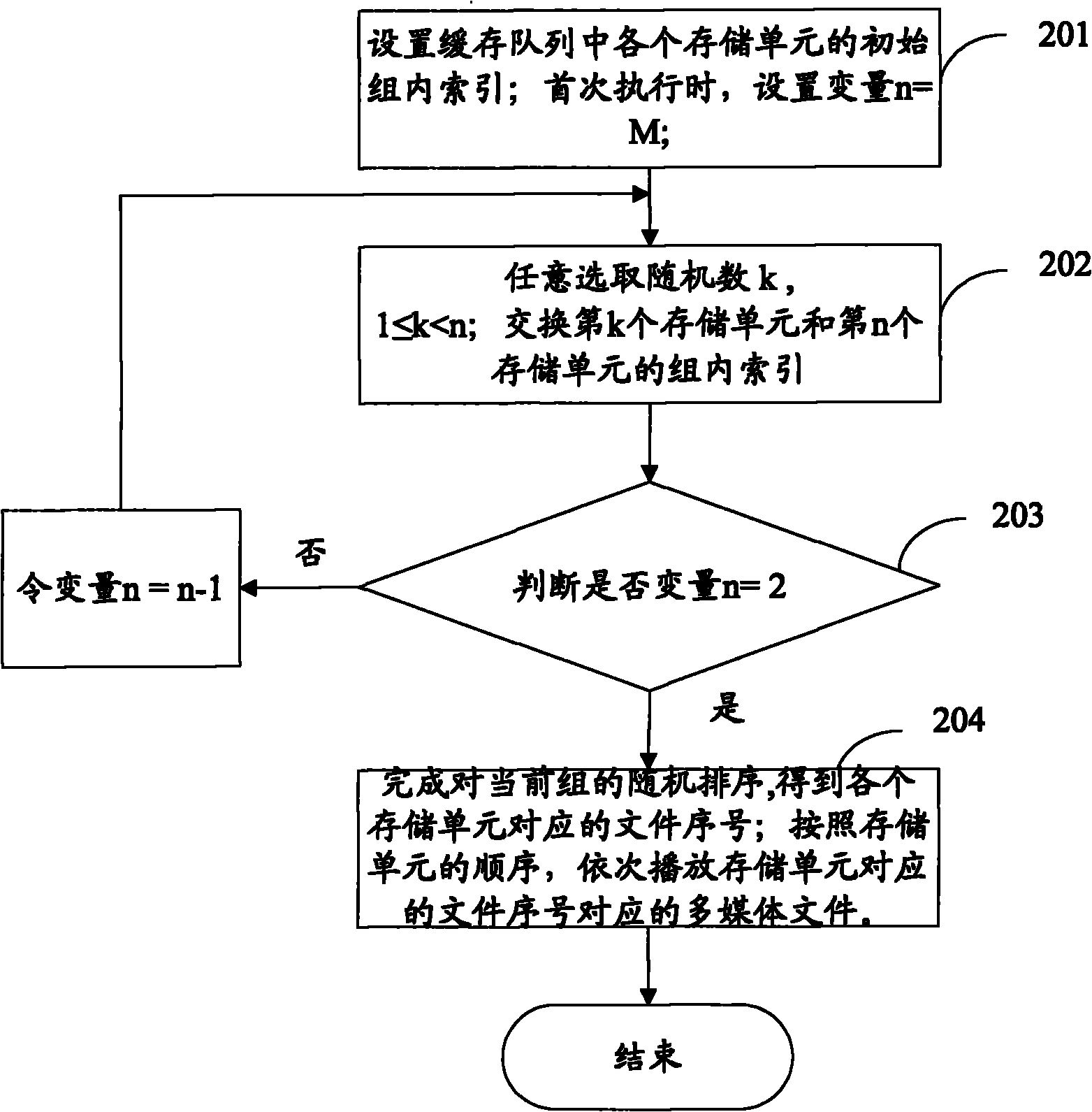Random playing method and device
A technology of random playing and waiting to be played, which is applied in the direction of electronic editing of digital analog information signals, record carrier editing, carrier index/addressing/timing/synchronization, etc., which can solve complex and large storage space problems and reduce the amount of calculation , the effect of reducing hardware requirements
- Summary
- Abstract
- Description
- Claims
- Application Information
AI Technical Summary
Problems solved by technology
Method used
Image
Examples
example 1
[0089] Example 1: Shuffle and sort 10 multimedia files in groups of 5.
[0090] The offset of the second group is 5, and the serial number in the cache queue plus 5 is its real serial number.
[0091] Assume that the order of the cache queue after the first group is shuffled is 5, 3, 1, 2, 4; use it as the initial value of the second group, if you have already switched to the second group and played a multimedia file, the second group The internal sequence becomes: 1, 3, 5, 2, 4, where the contents of the first storage unit and the third storage unit are exchanged.
[0092] When rolling back, according to the first set of offsets and the second set, the number that can be rolled back correctly is 5-2 (because an operation has been performed), at this time you can see the number "4" that was taken out last time, and then The forward sequence is 2, 5, 3, of which 5 is wrong (the correct one should be 1, but 1 has been exchanged with 5 in this value). In practice, since the M v...
example 2
[0097] Example 2: Delete the multimedia file whose serial number is 7.
[0098] If the first group is being fetched, the current group will not be affected, and the total number of multimedia files will be directly reduced by 1.
[0099] If the second group is being fetched, the index within the group mapped to the file number 7 in the cache queue should be 2. Assuming that the group indexes in the cache queue are: 1, 3, 5, 2, 4, then it needs to be greater than 2 Subtract 1 from the intra-group index, and move the other intra-group indexes after intra-group index 2 forward by one, and subtract 1 from the number of files in the group and the total number of files.
[0100] After deletion, the index order in the group is: 1, 2(=3-1), 4(=5-1), 3(=4-1), 5, of which only the first 4 are valid data, and the fifth is set to 5 It is to avoid mistakes in the next group.
[0101] Insertion is similar to deletion, except that the total number of intra-group indexes of the inserted gro...
PUM
 Login to View More
Login to View More Abstract
Description
Claims
Application Information
 Login to View More
Login to View More - Generate Ideas
- Intellectual Property
- Life Sciences
- Materials
- Tech Scout
- Unparalleled Data Quality
- Higher Quality Content
- 60% Fewer Hallucinations
Browse by: Latest US Patents, China's latest patents, Technical Efficacy Thesaurus, Application Domain, Technology Topic, Popular Technical Reports.
© 2025 PatSnap. All rights reserved.Legal|Privacy policy|Modern Slavery Act Transparency Statement|Sitemap|About US| Contact US: help@patsnap.com



